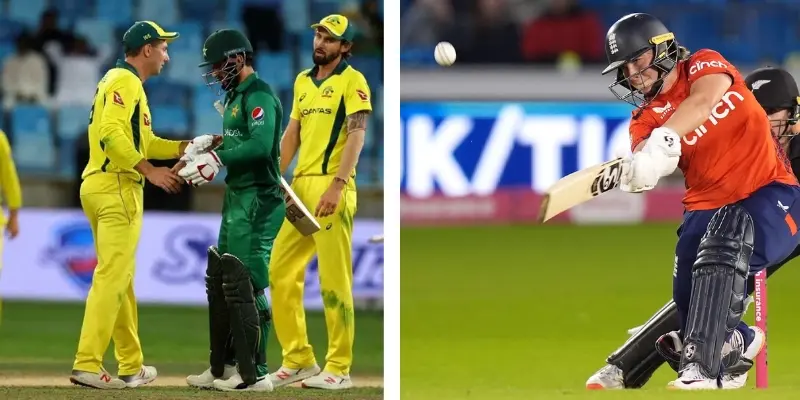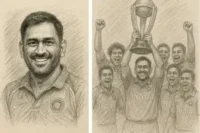What Makes Cricket Formats So Unique? Find Out Here
Published: 4 Jan 2025
One thing that makes cricket unique is its variety of formats. Whether you’re watching a long, five-day Test match or a fast-paced T20 game, each format offers a different experience. Understanding these formats is key to fully appreciating the game. In this article, we’ll explore the different cricket formats and why they matter to both players and fans.
What Are Cricket Formats?
Cricket formats are the different types of games in cricket, based on how long they last and the rules they follow. Each format has its own style, with different game durations, number of overs, strategies, and also some rules.
Why do these formats matter? They add variety to the game. Players use different skills depending on the format—Test cricket needs patience, while T20 focuses on quick, exciting play. These formats make cricket fun and interesting for everyone!

The Three Cricket Formats
There are three main cricket formats: Test cricket, One Day International (ODI), and Twenty20 (T20). Each format is unique, with its own set of rules and appeal.
1. Test Cricket

Test cricket is the longest format, and may last up to five days. Each team plays two innings to bat and bowl, and the goal is to score more runs than the opposing team while also taking all their wickets. Test matches are known for their strategy, patience, and the need for strong teamwork. Famous examples include the Ashes series between England and Australia.
note: the test cricket match is played with the players wearing conventional white uniforms. It is played with a red ball in the daytime and with a pink ball in day-night match.
2. One Day International (ODI)

ODIs are much shorter than Tests, each team can play 50 overs. This format balances strategy with excitement. Teams need to score as many runs as possible while also trying to bowl the opposition out. The World Cup is the biggest ODI tournament, with countries from around the world competing for the title.
note: the ODI match is played with the white/pink ball, the players wear colored uniforms, and day-night matches are played.
3. Twenty20 (T20)

T20 cricket is the fastest format, with each team playing just 20 overs. The focus is on quick runs, big hits, and fast-paced action. Games usually last around 3 hours, making it perfect for a fast and exciting cricket experience. The T20 World Cup is one of the most popular tournaments in this format.
note: the T20 match is played with the white ball, the players wear colored uniforms, and day-night matches are played
Differences Between Cricket Formats
All three formats differ in several key ways. These differences affect the pace and style of the game, the strategies used by teams, and the interest of the fans.
| Test Cricket |
|---|
|
Game Length: Up to five days with two innings per team. Strategy: Focus on patience, defensive play, and wearing out the opposition. Fan Appeal: Loved by traditional fans who enjoy the depth and tactics of the game. |
| One Day International (ODI) |
|---|
|
Game Length: 50 overs per side, completed in one day. Strategy: Balance of caution and aggression. Teams build their innings before accelerating scoring. Fan Appeal: Appeals to fans who enjoy a mix of long gameplay with exciting finishes, especially in World Cups. |
| Twenty20 (T20) |
|---|
|
Game Length: Shortest format, lasting about 3 hours with 20 overs per side. Strategy: Aggressive batting, big shots, and quick runs dominate. Fan Appeal: Ideal for modern fans seeking fast-paced, high-energy, and exciting cricket. |
Why Are Different Formats Important?
The variety in cricket formats is what makes this sport so special. Each format tests players in unique ways and offers fans different kinds of experiences of excitement.
For Players
- Skill Development: Players need diverse skills to excel in different formats. Test cricket hones patience and technique, while ODI and T20 focus on quick decision-making and innovation.
- Versatility: Only the players who have well-rouded abilities can play each format.
For Teams
- Strategy Variety: Teams adjust their strategies based on the format. For example, in Tests, they focus on consistency, while in T20s, aggression takes center stage. And in modern times most of the teams have separate team captains for each format.
- Global Competitions: Different formats lead to iconic tournaments like the Ashes for Tests, the ODI World Cup, and the T20 World Cup.
For Fans
- More Opportunities to Enjoy Cricket: With multiple formats, there’s always a match or tournament to look forward to, catering to different time frames and interests.
The diversity of formats keeps cricket exciting and evolving, ensuring there’s something for everyone—players and fans alike!
Which Format is Best?
Choosing the best cricket format often depends on personal preferences. Each format has its unique appeal.
Test Cricket
- For Traditionalists: Test matches are ideal for those who appreciate strategy, patience, and the purest form of the game.
- Skill Showcase: It’s where players prove their endurance and mastery of technique over five days.
One Day Internationals (ODIs)
- Balanced Action: ODIs offer a mix of strategy and excitement, making them a favorite for fans who enjoy one-day contests.
- Global Stage: Iconic events like the World Cup make this format thrilling and prestigious.
Twenty20 (T20)
- Fast and Fun: Perfect for fans with busy schedules, T20 delivers non-stop action in just a few hours.
- Entertainment Factor: Big hits, quick runs, and nail-biting finishes make T20 the most crowd-pleasing format.
Final Thought
There isn’t one “best” cricket format—it all depends on what you like. Test cricket is great for those who enjoy tradition and strategy. ODIs mix planning with exciting moments, while T20 is perfect for quick, action-packed games. Each format adds something special to cricket!

- Be Respectful
- Stay Relevant
- Stay Positive
- True Feedback
- Encourage Discussion
- Avoid Spamming
- No Fake News
- Don't Copy-Paste
- No Personal Attacks

- Be Respectful
- Stay Relevant
- Stay Positive
- True Feedback
- Encourage Discussion
- Avoid Spamming
- No Fake News
- Don't Copy-Paste
- No Personal Attacks





